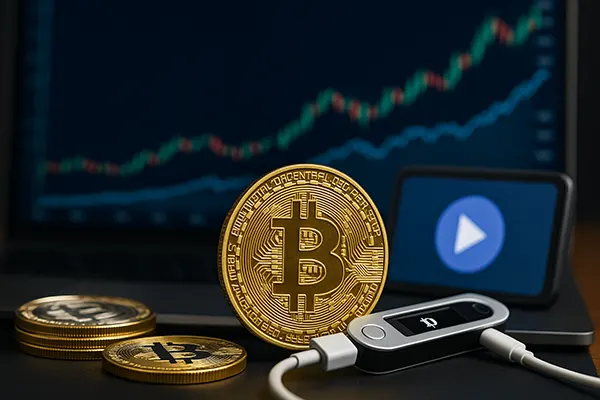
How Pump and Dump Cryptocurrency Schemes Operate on Telegram and Discord: New Scam Variations in 2024
The cryptocurrency sector has long been attractive to both legitimate investors and bad actors. In recent years, messaging services such as Telegram and Discord have become primary tools for organising so-called “pump and dump” schemes. These fraudulent operations artificially inflate the value of certain coins before a coordinated sell-off leaves unsuspecting traders with heavy losses. In 2024, these scams have evolved with new tactics, making them harder to detect and more damaging to victims.
Understanding Pump and Dump Schemes in the Crypto Context
In cryptocurrency markets, a pump and dump scheme typically begins with organisers selecting a low-market-cap coin, often obscure and thinly traded. The perpetrators quietly buy the asset in advance, preparing for a rapid price surge. They then coordinate a public campaign, often using private groups on Telegram or Discord, to hype the coin’s potential. This hype is rarely based on genuine fundamentals and instead relies on misleading statements, doctored charts, or fabricated news.
The “pump” phase involves a flood of buy orders from group members and outsiders influenced by the chatter, driving up the price dramatically within minutes or hours. As the coin reaches a predetermined high, insiders execute the “dump” by selling their holdings, causing the price to collapse. Those who joined late in the pump phase are left with devalued tokens and significant financial losses.
While such schemes are not new, the anonymity and global reach of Telegram and Discord make them exceptionally difficult to regulate. Their private channels allow for rapid mobilisation, cross-border participation, and the ability to dissolve and recreate groups almost instantly.
Why Telegram and Discord Remain the Preferred Platforms
Telegram offers large-group capabilities, encrypted messaging, and minimal identity verification, creating a perfect environment for fraudsters to coordinate without revealing personal information. Organisers often use automated bots to manage announcements, trigger timed messages, and even simulate fake trading activity to make the hype more convincing.
Discord, while originally built for gaming communities, has evolved into a hub for crypto discussion. Its structure of servers and channels enables targeted communication, segmenting members by “tiers” or “roles” based on their willingness to invest or recruit others. Voice channels are also exploited to deliver real-time hype sessions, further amplifying the emotional momentum that drives impulsive buying.
Both platforms allow the rapid spread of visual content—screenshots of fake market data, edited wallet balances, and counterfeit exchange statements—making the scams appear legitimate. Scammers also exploit the “fear of missing out” (FOMO) by creating countdowns or promising insider information to lure quick action.
New Variations of Pump and Dump Scams in 2024
In 2024, pump and dump schemes have adapted to increased awareness among traders and tighter oversight by some exchanges. One major shift is the targeting of new decentralised exchanges (DEXs) and blockchain networks where token listings are virtually unregulated. Fraudsters create tokens themselves, run the pump, and disappear before victims can react.
Another emerging trend is the integration of artificial intelligence to automate market manipulation. Bots now track trading volumes, execute timed buys and sells, and even interact with chat participants to maintain the illusion of organic interest. This has made scams more convincing and efficient, with price surges appearing more like genuine market moves.
Additionally, scammers have begun blending pump and dump tactics with rug-pull schemes from the decentralised finance (DeFi) world. In these cases, they artificially pump a project’s governance token, only to drain liquidity pools entirely, leaving buyers with worthless assets and no trading exit.
The Role of Cross-Platform Coordination
Scammers increasingly operate across multiple platforms simultaneously to expand their reach and reduce the likelihood of detection. For example, initial hype might start on Twitter (X) or TikTok before moving followers to a private Telegram group where detailed instructions are given. Discord servers are sometimes used in parallel to manage “VIP” participants.
This multi-channel strategy also makes it harder for regulators to shut down operations quickly. Even if one group is banned, communication continues on other platforms, allowing the scam to progress with minimal disruption. Fraudsters often maintain large lists of user contacts to instantly rebuild their audience in new groups.
Moreover, scammers now use blockchain analytics tools to monitor wallet activity and identify large buyers, tailoring their pitch to convince these individuals to invest further before the dump phase. This targeted approach increases profitability for organisers and worsens losses for victims.

How to Identify and Avoid Pump and Dump Schemes
Recognising the warning signs of a pump and dump scheme is crucial for any cryptocurrency trader. Sudden promotions of an unknown coin in private groups, especially when paired with urgent calls to buy, should raise suspicion. Legitimate investment opportunities rarely rely on secrecy or time-limited participation.
Another red flag is the lack of credible information about the project outside of the group’s own communications. If a coin has little to no presence on reputable news sites, lacks transparent team details, or trades only on minor exchanges, the risk is considerably higher. Always verify trading data from independent sources before making a purchase.
Investors should also be wary of promises of guaranteed profits or insider knowledge. In legitimate markets, no one can guarantee returns, and those who claim otherwise are often attempting to manipulate emotions to drive rash decision-making.
Practical Steps to Protect Yourself
First, avoid making trading decisions based on information from unknown individuals or unverified sources. Joining large, public crypto communities with transparent moderation can provide a safer environment for discussion. Use platforms that have strict Know Your Customer (KYC) processes and fraud monitoring tools.
Second, diversify investments rather than committing large sums to a single, highly volatile token. This reduces the risk of catastrophic losses if a scheme unfolds. It is also advisable to use stop-loss orders where possible to automatically limit exposure to sudden price drops.
Finally, stay updated on emerging scam tactics through trusted cryptocurrency watchdog groups, blockchain analytics firms, and financial regulators. As pump and dump schemes continue to evolve, awareness and vigilance remain the most effective defences.
Popular articles
-
 Cryptocurrency Bridges: Key Risks, Major Hacks and the Future of Cr...
Cryptocurrency Bridges: Key Risks, Major Hacks and the Future of Cr...Cryptocurrency bridges have become a critical component of the modern …
-
 Risks 2025: Quantum Computers, Cryptocurrency Security and Whether ...
Risks 2025: Quantum Computers, Cryptocurrency Security and Whether ...Rapid progress in quantum technologies raises understandable concerns within the …
